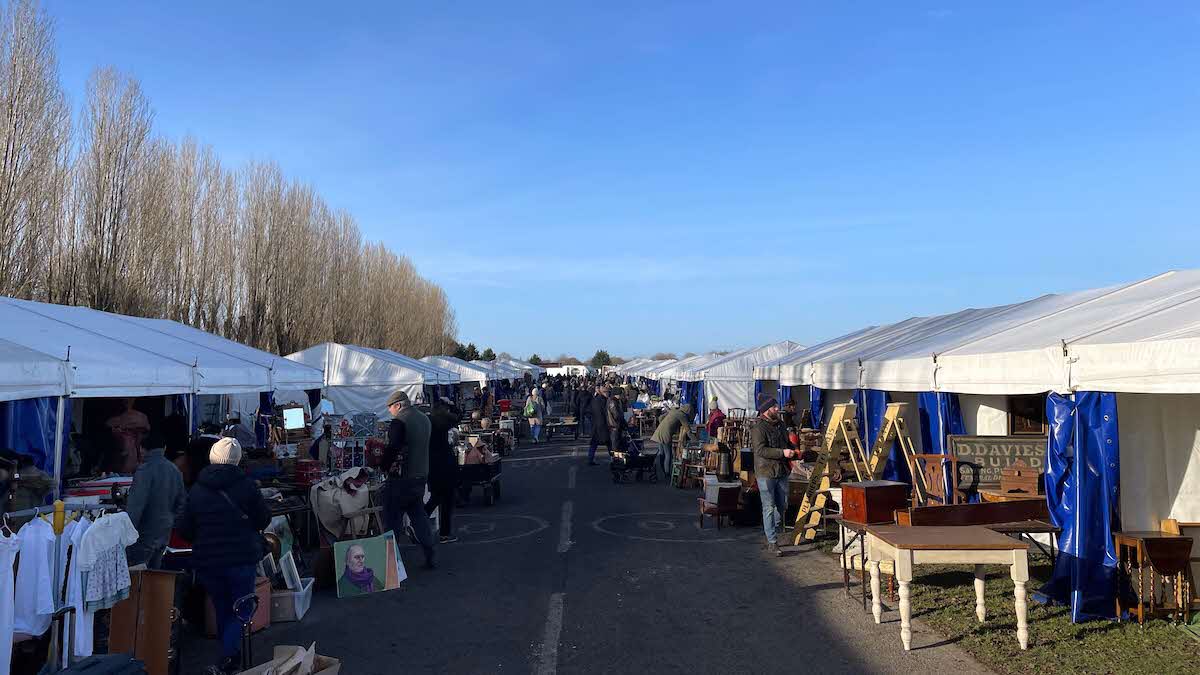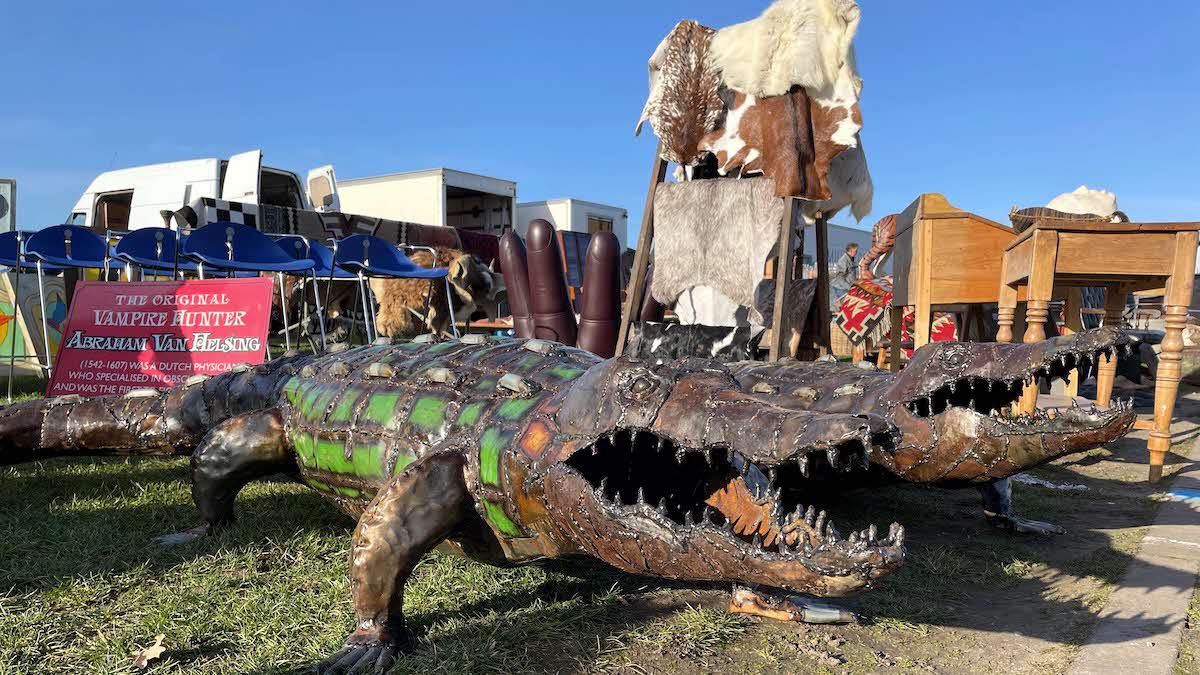Book a Club campsite
Explore hundreds of Club campsites and plan for stays throughout the year. There are plenty of locations to choose from, search and book today.
Book nowJonathan Manning is filled with nostalgia during a bargain hunt at Europe’s largest antiques and collectors’ fair

Thirty seconds beyond the entrance gate to the vast Newark International Antiques and Collectors Fair (IACF), the first stall sets the scene for the mind-boggling collection of items on offer. To the left is a ‘Piggin’ collectible from around the year 2000, to the right a stuffed leopard head with vicious fangs and, behind, crockery and a tea caddy from China.
The Newark event is Europe’s largest antiques fair, attracting up to 2,500 stands and thousands more buyers from around the world, eager to snuffle out the truffles from the bric-a-brac. There are crowds of trade buyers, private collectors and even the BBC’s Bargain Hunt, here today with presenter Raj Bisram.
With no specific items on my wish list, I set off down the first avenue of stalls, mesmerised by the variety of curiosities up for sale. One stand features works by copycat painters, with paintings that look for all the world as though they have come from the brushes of Lowry or Van Gogh, although the signatures say differently. Next door, a stallholder is in a heated discussion with a customer, haggling over the price of a silver tankard.

As a novice, there’s no knowing the potential value of the various pieces on offer. Some are stacked on trestle tables where everything costs £5, £7 or £10, others are behind glass and subject to negotiations running into four or five figures. The odds of hunting out an under-priced bargain seem slim, yet some punters know exactly what they are looking for.
Caravanners concerned about towing weight and motorhomers with limited space in their vans can rest assured that there’s a slick infrastructure in place at the fair to ship outsize objects home. And, frankly, I’d defy anyone not to spot one thing here that they would like to own. There are iconic metal and enamel adverts for Michelin tyres and Craven “A” tobacco – ideal for a man cave; planters and water features that would beautify any garden; Persian rugs; and gleaming ships’ lanterns.
One stallholder tells me how the massive price rise of shipping container bookings has slowed the import of cheap new garden ornaments from overseas and turbocharged demand for antiques, which are eagerly scavenged by traders.
Yet what counts as desirable is clearly in the eye of the beholder, with one man’s treasure being another’s tat. Does a wrought iron bench have an attractive patina or a plague of rust? A parade of stainless-steel milk urns stands to attention next to moss-covered sculptures of lions, and there must surely be a collective noun for lines of watering cans, glass jars and milking parlour stools.
If nothing else, browsing the stalls is a reminder of how quickly times and technology have changed. I spy a secretarial pool’s worth of clunky Imperial typewriters, a march of cobblers’ lasts from the era when shoes were handmade, and even an old pub sign declaring ‘You may telephone from here’. All have been rendered redundant by technological progress.

Handsome trunks and leather suitcases bear witness to a time before aircraft baggage allowances. There are reminders of different attitudes, too, with stuffed black and polar bears and a train of elephants carved from ivory. Most eye-catching, perhaps, are the stalls featuring items that have been ‘upcycled’ to give them a 21st-century purpose. There’s a collection of old theatre and television studio spotlights refitted with modern LEDs to serve as standard lamps; old floorboards have been planed, sanded and waxed into fabulous kitchen tables; and church pews as lonely as The Beatles’ Father McKenzie have been refashioned into hallway benches.
It’s hard to capture in words the eclectic nature of the antiques offered for sale at the fair. Some stalls look as if the vendor has simply tipped out the contents of their attic or garden shed, others could stand shoulder-to-shoulder with boutiques in London’s Hatton Garden, their silverware and jewellery shimmering in showroom condition. There are brightly-painted tea sets, ideal for anyone setting up a shabby-chic B&B, towers of copper pans fit for a stately home kitchen and leather-bound books available by the yard for a set designer building a library.
There are also boundless ideas for anyone seeking a gift for the person who has it all. Forget socks and books about golf – who wouldn’t want a scarlet Queen Victoria post box or a highly-polished diving helmet? Which baker wouldn’t want to trump Prue Leith and Paul Hollywood with a late 17th-century salamander designed to be heated in a fire then laid on top of pies and biscuits to brown them?
The sight of a silver punchbowl with cups and ladle prompts a word of caution for any caravanner or motorhomer who enjoys a tipple or two at lunchtime. Overindulge and there’s the risk of returning home with holiday souvenirs unlike any you have bought before, from Polish street signs to life-size iron crocodiles from Zimbabwe.
The weird and wonderful are on sale at this giant antiques fair and, even if you leave empty handed, the nostalgia of seeing so many items that used to be commonplace but no longer have a part to play in modern life is heartwarming. If I had a pound for every time I heard a visitor say, “Oh, my dad/aunt/gran used to have one of those,” then that 1730 silver tankard might just become affordable.